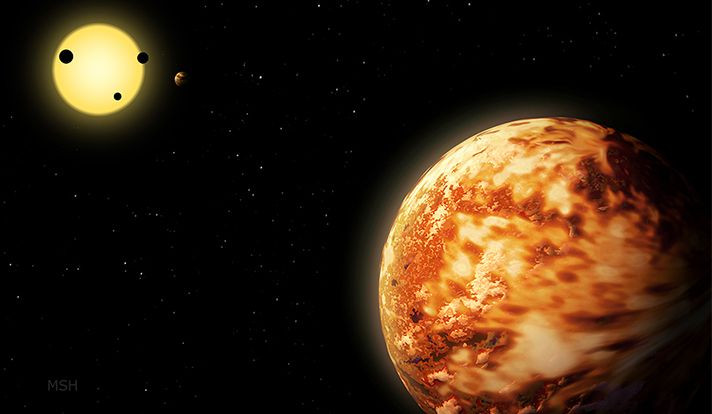Astronomers Discover A Neptune-Sized 'Lost' Planet In Star System 3,000 Light-Years Away

A team of astronomers has detected a planet orbiting a G-type star about 3,000 light-years from Earth. The discovery, made using observations conducted by NASA’s Kepler Space Telescope, brings the total number of exoplanets in the star system to five.
“The new planet, Kepler-150 f, was overlooked for several years,” Yale University, whose researchers made the discovery, said in a statement. “Computer algorithms identify most such ‘exoplanets,’ which are planets located outside our solar system. The algorithms search through data from space mission surveys, looking for the telltale transits of planets orbiting in front of distant stars.”
This hitherto “lost” planet is estimated to be nearly the size of Neptune and orbits its sun once every 637 days — one of the longest known orbits for an object in a five-planet system. The other planets in the system — Kepler 150 b, c, d and e — orbit much closer to the sun than Kepler-150 f does.
The Kepler Space Telescope, launched in 2009, has so far detected nearly 3,500 confirmed exoplanets. In order to detect planets orbiting distant stars, the spacecraft looks for minuscule changes in the stars' brightness due to transiting planets.
While this technique is foolproof for single-planet star systems, when it comes to a system with many planets, it becomes harder to distinguish between the dips in starlight caused by each individual planet.
“Only by using our new technique of modeling and subtracting out the transit signals of known planets could we then actually see it for what it really was,” Joseph Schmitt, a graduate student at Yale University and the lead author of a study describing the new discovery, said in a statement released Wednesday. “Essentially, it was hiding in plain sight in a forest of other planetary transits.”
This is not the first time a star system hosting multiple planets has been detected. Most recently, astronomers using the NASA’s Spitzer Space Telescope discovered seven Earth-sized planets — at least three of which reside in the habitable zone — of a red dwarf star. In addition to the Spitzer telescope, the Transiting Planets and Planetesimals Small Telescope (TRAPPIST) and the Very Large Telescope (VLT) in Chile were also used to make the discovery.
© Copyright IBTimes 2024. All rights reserved.






















